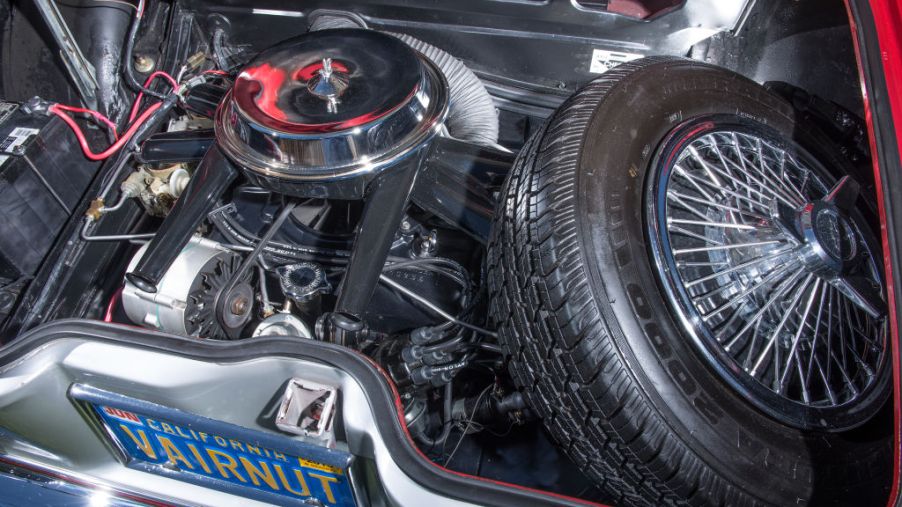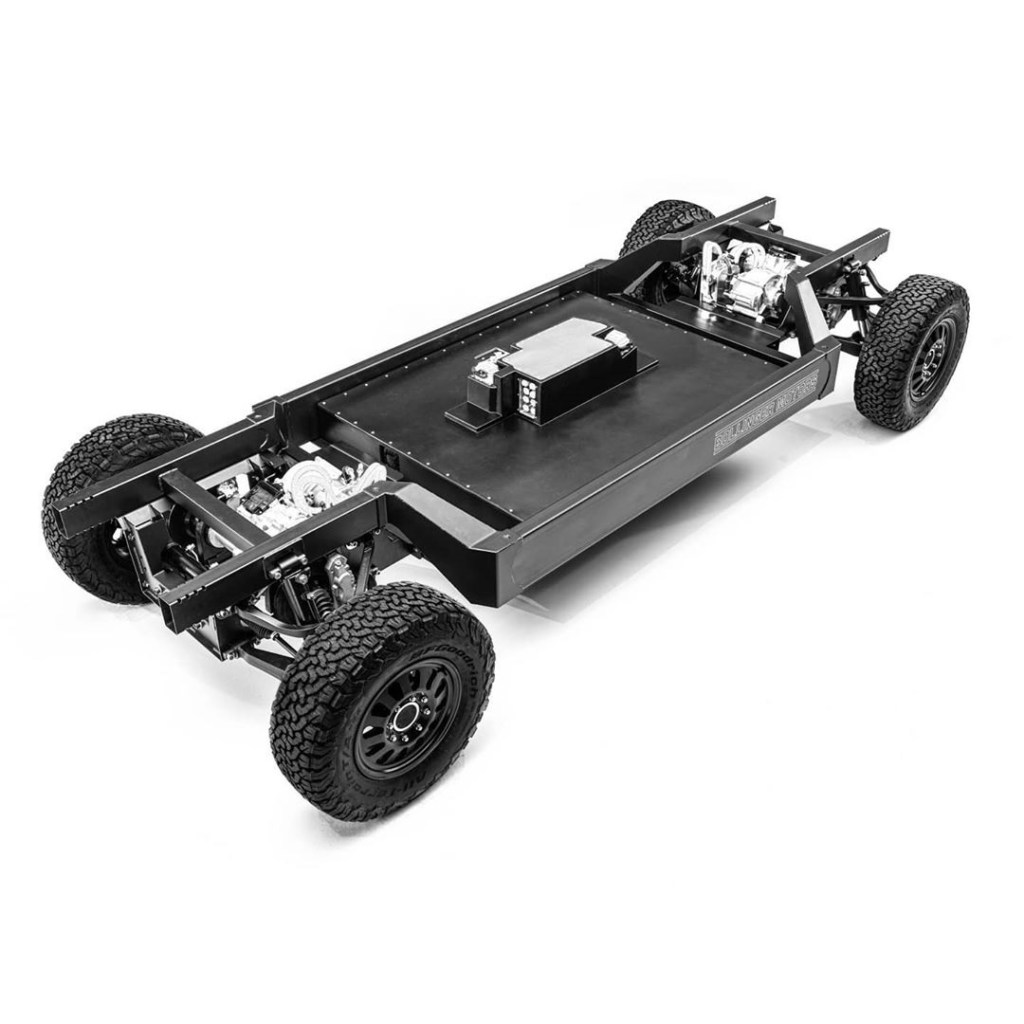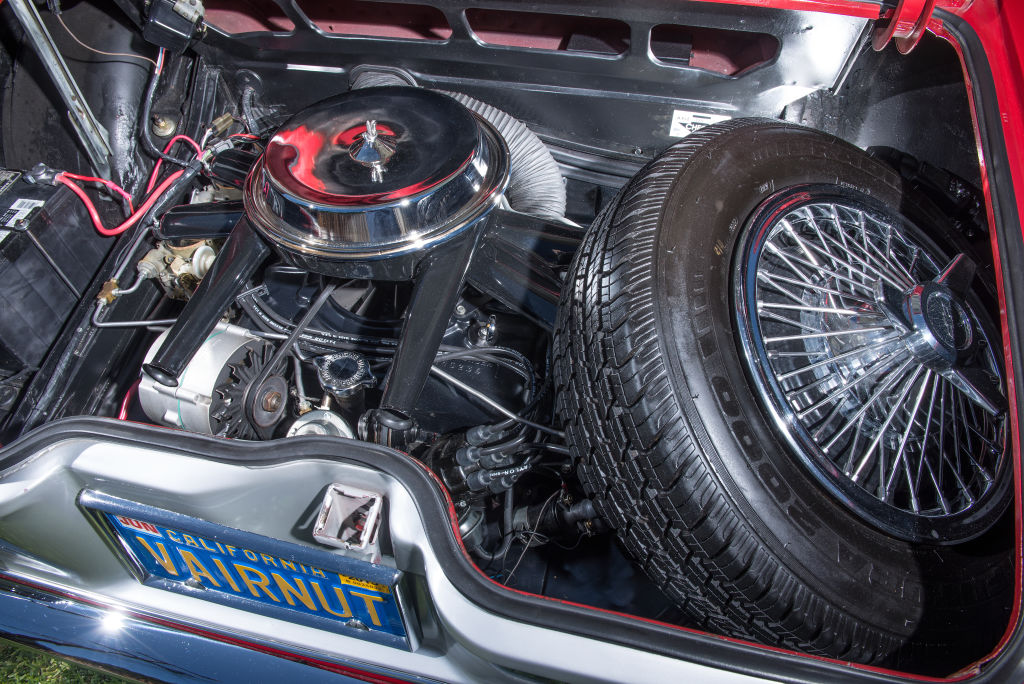
Why Are Automakers Getting Rid of Spare Tires?
Just like the rest of your car, its tires have also evolved over the years. But, just like the paint, gasoline, and battery, they can still degrade and need specific care. And they can still get punctured and go flat. When that happens, you’ll naturally want to put on a spare tire. However, if you have a newer car or SUV, you may be in for an unfortunate shock. That’s because fewer vehicles come with spare tires included.
Why fewer cars come with spare tires
To be sure, most cars still come from the factory with a spare tire. Usually, it’s in the form of a ‘donut’ spare stored in the trunk or rear cargo area. However, Cars.com reports that, in 2017, about 28% of vehicles sold new came without a spare tire or jack.
In fairness, automakers aren’t just going to leave you completely stranded in case of a flat, Consumer Reports explains. In place of the spare tire, many cars now offer emergency tire repair kits. These include tire sealant, as well as air compressor and hose to re-inflate a flat tire.
Some automakers, though, include neither a spare nor a repair kit. Instead, they equip their vehicles with run-flat tires. BMW especially uses this tech, Edmunds.com reports. These tires come with specially-reinforced sidewalls. It’s not to make them more pressure-resistant, though. It’s so you can drive on them at low speed even if they’re flat. You don’t even need to stop, just keep driving to a repair shop.

But why are automakers swapping out the spare tire? Space, for one, Les Schwab reports. Hybrids and EVs especially have little extra room underneath the seating area, due to their battery packs. So, it’s getting harder to find space for the spare.
In addition, there are weight and performance factors. Even the spare tire and jack in my NB Miata weighs around 30 lbs. Which doesn’t sound like much—however, every unnecessary pound makes a car burn more fuel.
Plus, imagine you’re an automaker making a high-end car with an expensive, weight-saving material like carbon fiber. Investing all that money to decrease weight, only to add it back in? Little wonder few sports cars or supercars have spare tires.
Are tire repair kits and run-flats better alternatives to spare tires?

Tire repair kits and run-flat tires do have some advantages over spare tires over just the weight savings. Spare tires, like normal tires, have to be replaced periodically, Your Mechanic reports. Even if they’re never used.
Actually, much like other car components, never using your spare can make it degrade faster, Tire Rack reports. True, the replacement period is every 6-10 years. But it is still something to think about. And if you need to get home when your tire’s flat, it’s an added stressor. However, tire repair kits and run-flat tires aren’t perfect solutions.
The kits can only fix shallow punctures on the tire’s tread, not its sidewall. They also won’t help if your tire gets separated from the wheel. Some tire shops may not be able to repair a tire that’s got sealant in it, Edmunds.com reports. In addition, The Drive reports that some sealants, if used excessively, can cause your wheels to rust over time. Not to mention, once you’ve used your sealant, you’ll need to buy a new bottle.
Run-flat tires also have their limitations. These tires are more expensive than conventional tires and aren’t always kept in stock at small tire shops. Their stiffer sidewalls also make the ride less comfortable and hurt fuel economy.
Should you carry a spare with you?
If you do get a flat tire and need to keep going, a spare tire is extremely useful. You don’t even necessarily need to keep a jack on hand to install one. However, if you want to give your car, truck, or SUV a spare, there are some things to consider.
Firstly, make sure your vehicle has enough room to safely and securely store the spare tire. Especially if you’re going off-roading, it could get loose and cause damage. Secondly, there’s a reason why many SUVs with tires mounted on their tailgates should use tire covers. UV rays and excessive heat can damage the spare, Discount Tire reports. That’s why they have a 6-10 year lifespan.
Also, consider if you genuinely need a spare. If you regularly travel within an area with good reception, roadside services can assist you if you get a flat. And according to GM’s Global Tire Subsystem Leader Dave Cowger, most call roadside assistance even if they do have a spare.
Follow more updates from MotorBiscuit on our Facebook page.


